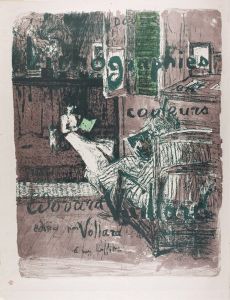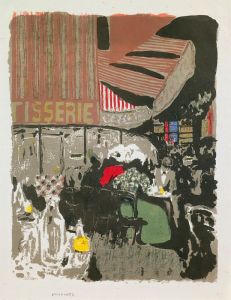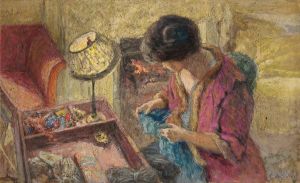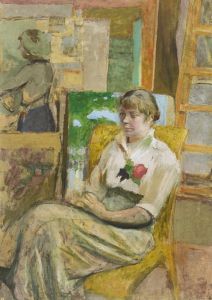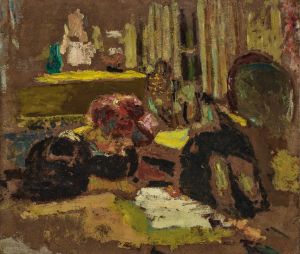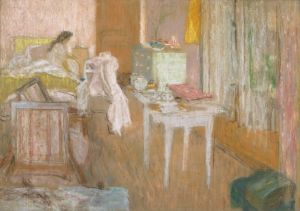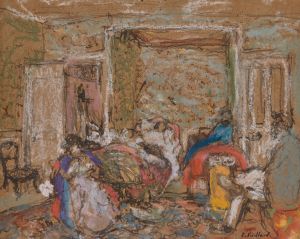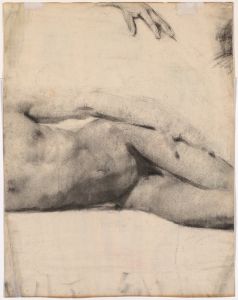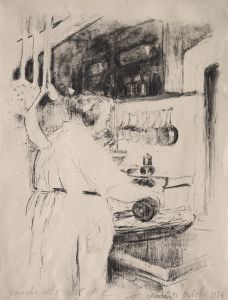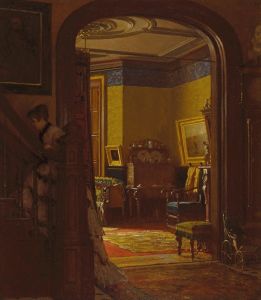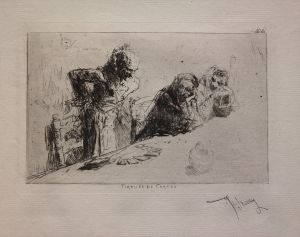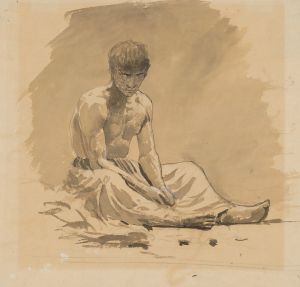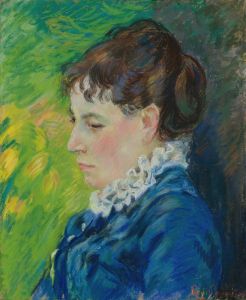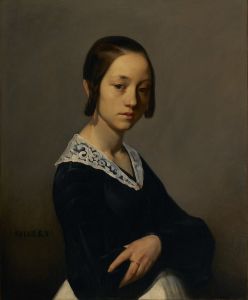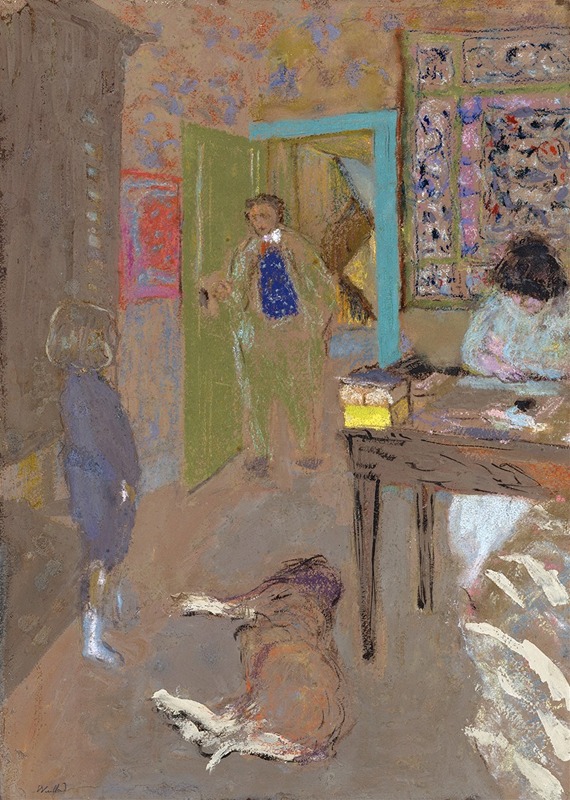
Interior at Saint-Jacut
A hand-painted replica of Édouard Vuillard’s masterpiece Interior at Saint-Jacut, meticulously crafted by professional artists to capture the true essence of the original. Each piece is created with museum-quality canvas and rare mineral pigments, carefully painted by experienced artists with delicate brushstrokes and rich, layered colors to perfectly recreate the texture of the original artwork. Unlike machine-printed reproductions, this hand-painted version brings the painting to life, infused with the artist’s emotions and skill in every stroke. Whether for personal collection or home decoration, it instantly elevates the artistic atmosphere of any space.
Édouard Vuillard, a prominent French painter associated with the Nabi movement, created the artwork "Interior at Saint-Jacut." Vuillard is renowned for his intimate domestic scenes and his ability to capture the subtleties of everyday life through his unique style, which often blends elements of Impressionism and Symbolism.
"Interior at Saint-Jacut" is an exemplary piece that showcases Vuillard's skill in depicting interior spaces with a sense of warmth and familiarity. The painting is believed to have been created during one of Vuillard's visits to the coastal village of Saint-Jacut-de-la-Mer in Brittany, France. This region was a popular retreat for artists and intellectuals during the late 19th and early 20th centuries, providing a serene environment that inspired many creative works.
Vuillard's work is characterized by his use of rich patterns and textures, which he often employed to create a tapestry-like effect in his paintings. In "Interior at Saint-Jacut," Vuillard's attention to detail is evident in the way he captures the interplay of light and shadow within the room. His use of color is both subtle and expressive, with a palette that enhances the intimate atmosphere of the scene.
The composition of "Interior at Saint-Jacut" reflects Vuillard's interest in the relationship between figures and their surroundings. The painting typically features figures engaged in quiet, everyday activities, such as reading or conversing, though the specific details of the figures in this particular work are not widely documented. Vuillard often depicted his subjects in a way that emphasizes their integration with the environment, blurring the lines between the figures and the background to create a cohesive and harmonious composition.
Vuillard's technique involved the use of distemper, a type of paint made by mixing pigments with a binding agent such as glue. This medium allowed him to achieve a matte finish and soft edges, contributing to the dreamlike quality of his interiors. His brushwork is delicate and precise, yet it conveys a sense of spontaneity and fluidity that adds to the overall charm of his paintings.
"Interior at Saint-Jacut" is a testament to Vuillard's ability to transform ordinary domestic scenes into works of art that resonate with viewers on an emotional level. His paintings often evoke a sense of nostalgia and introspection, inviting the audience to reflect on the quiet moments of life that are often overlooked.
Vuillard's contribution to the art world extends beyond his paintings; he was also a key figure in the development of the Nabi movement, which sought to break away from traditional artistic conventions and explore new forms of expression. His work has been celebrated for its innovative approach to composition and its ability to capture the essence of modern life.
Today, "Interior at Saint-Jacut" is appreciated not only for its aesthetic qualities but also for its historical significance as part of Vuillard's broader oeuvre. It serves as a window into the artist's world, offering insight into his creative process and his vision of the intimate spaces that define human experience.





